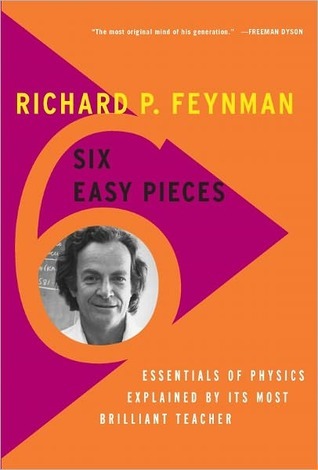More on this book
Community
Kindle Notes & Highlights
Read between
February 24 - March 5, 2023
that all things are made of atoms—little particles that move around in perpetual motion, attracting each other when they are a little distance apart, but repelling upon being squeezed into one another
if an apple is magnified to the size of the earth, then the atoms in the apple are approximately the size of the original apple.
when we compress a gas slowly, the temperature of the gas increases.
The difference between solids and liquids is, then, that in a solid the atoms are arranged in some kind of an array, called a crystalline array, and they do not have a random position at long distances; the position of the atoms on one side of the crystal is determined by that of other atoms millions of atoms away on the other side of the crystal.
Everything is made of atoms. That is the key hypothesis. The most important hypothesis in all of biology, for example, is that everything that animals do, atoms do. In other words, there is nothing that living things do that cannot be understood from the point of view that they are made of atoms acting according to the laws of physics.
Observation, reason, and experiment make up what we call the scientific method.
the chemical properties depend upon the electrons on the outside, and in fact only upon how many electrons there are. So the chemical properties of a substance depend only on a number, the number of electrons.
the existence of the positive charge, in some sense, distorts, or creates a “condition” in space, so that when we put the negative charge in, it feels a force. This potentiality for producing a force is called an electric field.
there is a rule in quantum mechanics that says that one cannot know both where something is and how fast it is moving. The uncertainty of the momentum and the uncertainty of the position are complementary, and the product of the two is bounded by a small constant. We can write the law like this: Δx Δp ≥ ħ/2,
things which we used to consider as waves also behave like particles, and particles behave like waves; in fact everything behaves the same way. There is no distinction between a wave and a particle.
The new view of the interaction of electrons and photons that is electromagnetic theory, but with everything quantum-mechanically correct, is called quantum electrodynamics.
A photon is never at rest; it is always moving at 186,000 miles a second.
Statistical mechanics, then, is the science of the phenomena of heat, or thermodynamics.
conservation of energy. It states that there is a certain quantity, which we call energy, that does not change in the manifold changes which nature undergoes.
it says that there is a numerical quantity which does not change when something happens.


